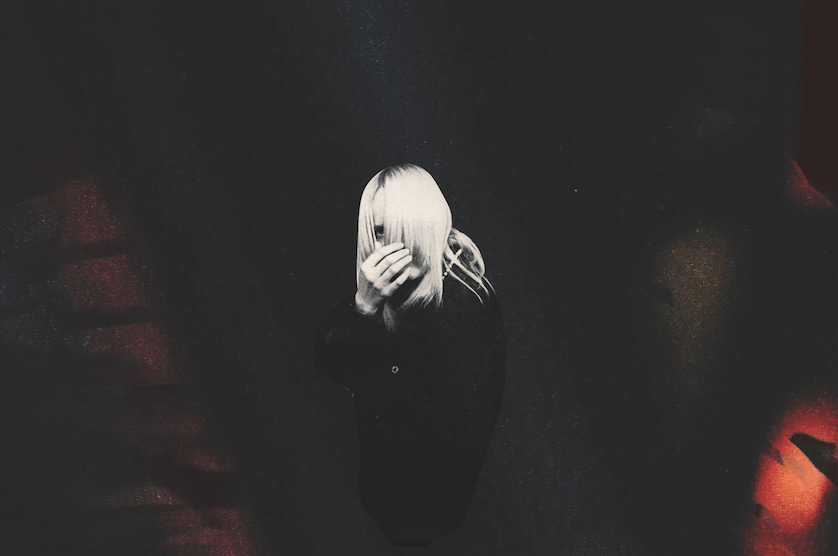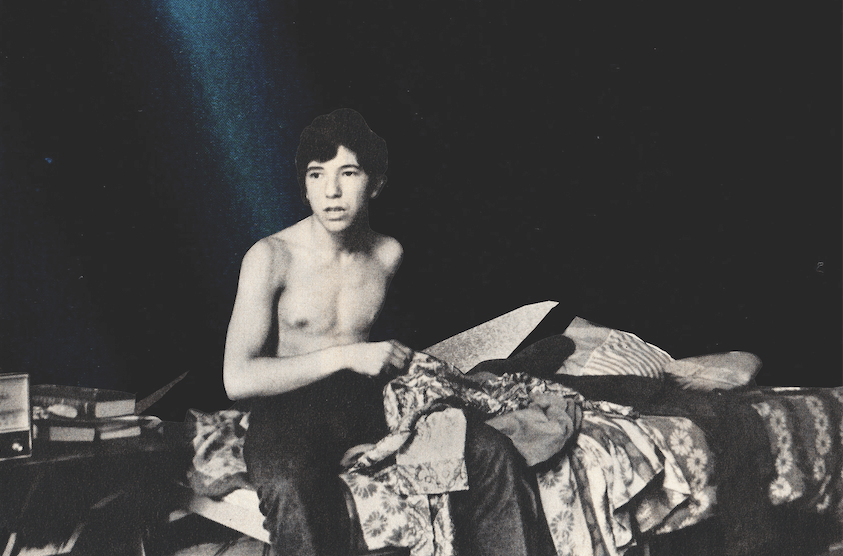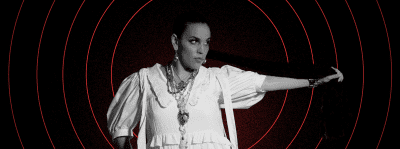Ghost Stories Suck: Please Consider Your Alternatives
The Case Against Ghosts
Ghost stories are bad, almost by definition. They rely on malevolent spirits who literally cannot touch us—and certainly can’t kill anything. Zombies may not have the speed or the wits of the living, but they at least force us to run. Vampires, too, have their defects, but their bite is real. Ghosts, however, have to rely on smoke, mirrors, and boos to make their mark. This is not a good recipe for terror. When Halloween comes around, I want nothing more than to watch scary movies and read scary stories about the things that traditionally scare us, but this year I finally came to grips with the fact that the genre of ghost stories, hallowed as it may be, is bankrupt. In fact, the more I think about it, the less it seems to exist at all.
Early entries in the ghost story genre tended to be stories of haunted houses—stories where danger lurked around every corner, and where lurking was the ghosts’ main responsibility. Such literal ghosts haunt Shirley Jackson’s Hill House, Stephen King’s Overlook Hotel, and the less exclamatory residences of Poltergeist and Paranormal Activity. These are some of the best examples of the genre, and they show how much imagination is required to enliven all those “BOO!” moments. It takes a kind of genius to keep them from becoming silly. It makes sense, then, that there are so few ghost stories that now stand as classics, despite the fact that the genre is so familiar. To the extent that the genre thrives on surprises rather than suspense, it was always going to have a hard time sustaining itself.
Shakespeare’s most famous ghost offers an early and prescient solution by operating ambiguously. We don’t know whether Hamlet is seeing the ghost of his father or simply bringing his frenzied conscience out into the light of day (or the dark of night, as the case may be). We don’t know whether to fear the ghost or Hamlet. That ghost haunts us because he forever refuses to declare his affiliation; he refuses to belong entirely to either the living or the dead.
The ambiguous ghost also appears to good effect in such classics as “The Turn of the Screw,” We Have Always Lived in the Castle, The Sixth Sense, and The Others. These stories postpone their ghostly revelations to the last possible moment, and are thus sublimated into twists, into surprise endings. We glimpse the ghost at the end, and are haunted by that vision, but only because it has turned a story that we could equally well have read, up to that last moment, as a non-supernatural story. So these are ghost stories, certainly, because they have ghosts, but it’s also worth noting that the genre here succeeds by obscuring, throughout, its supposed feature. I can’t think of another genre that works in this manner. There is no such thing as the thrill-less thriller, or the journey-less travelogue.
But just because it’s hard to entertain people with ghosts doesn’t mean that we should leave haunted houses behind. There’s a reason why we still think of ghost stories when we think of Halloween, and there’s a reason why Halloween remains such a popular holiday. We, the living, are haunted. The past does rise up unbeckoned. And we thrill to that fact and recoil from that fact in equal measure. Or, to put it another, briefer way: “Every love story is a ghost story.”
* * * * *


Not every haunting is a scary one, of course, and that’s the most essential difference between the love story as ghost story on offer in The Captive (or Truly Madly, Deeply, or, uh, Ghost) and the more literal ghost story in “The Legend of Sleepy Hollow.” Washington Irving was interested in telling a scary ghost story, and his story remains iconic because of its wonderful imagery. But just because Irving wasn’t as concerned with themes of memory, regret, or other more metaphorical kinds of hauntings, doesn’t mean that his story isn’t also profoundly metaphorical. Ghosts are like zombies that way. They are metaphorical by nature.
The sad irony of ghost stories is that they can’t capitalize on that enormous potential. Ghosts can’t just be ghosts in the way that zombies can just be zombies, because ghosts can’t really be at all. Ghosts already are the metaphor, and there’s no more work for them to do. All they can do is try to scare us—but that also represents a kind of self-betrayal, because we’re not frightened by the things that haunt us as much as we are simply haunted by them.
That’s not to say that there aren’t any good ghost stories out there. There are… a few. But it’s important to note that the things that ghost stories have going for them—emotional resonance on the theme of loss, and the present experience of something that is past—are not the things that the genre of ghost stories really ever trades in. And that’s too bad. But there is another kind of movie that does trade in those things, that takes the idea of ghosts more seriously. I’m talking about stories of real ghosts, of real hauntings, of Rebecca, Vertigo, Anatomy of a Murder, Laura, and Twin Peaks. These artworks may not cohere into a single style, as genres typically do, but they share an obsession. They are obsessed with what we cannot see.
These are the best and the truest kinds of ghost story.
The Case for a Less Supernatural Kind of Haunting
I can still vividly recall a rant that Roger Ebert gave—apropos of Unforgiven, I think—about the folly of condemning a genre as a whole. He was talking about Westerns, but his argument has broad applications (although even he seemed to forget that, on occasion). And although ghost movies do face a lot of obstacles just by definition, I don’t think that’s entirely their fault. And I think there are movies that achieve what the ghost genre promises, and that’s what I really want to talk about here. Because although “non-supernatural ghost stories” is (a) a pretty bald contradiction in terms and (b) not an especially catchy name, even for a mini-genre, it’s still calls to mind some of the very best movies, books, and shows from the last seventy years. And I don’t think that’s an accident.
Exhibit A: Rebecca
The scene above, from Rebecca is… well, it may not be the best scene ever put on film, but it does do what only the most ambitious works of art can ever strive to do: it transcends the very nature of its medium. Poetry, at its best, is a written word that strives to sing; prose, at its best, attempts to say what can’t be said; and film, at its best, tries to show what can’t be seen. The titular Rebecca is a ghostly presence in Hitchcock’s film—little more than a name, in fact—who nevertheless haunts nearly every scene. In this scene, the dead but not forgotten character of Rebecca gains something less than a body but something more than a void. She gains a presence, because Maxim de Winter (like his second wife, like Mrs. Danvers, and like Jack Favell—albeit in different ways) is haunted by her.
We see him watching her, and to see her—even through that lens—is to unlock the key to the mystery of how she died. But it needs to be said that, as in so many of the great Hitchcock films, it’s not the twist that sticks with you; it’s the revelation. The scene itself is haunting—but not because we’re in the presence of the supernatural, but rather because the weight of the past is pushing with such tremendous pressure upon the present that it feels like time itself is warping. Like reality itself has warped.
Another way of saying the same thing would be to point out that, up to this point, the camera has been guided by a fluid, natural, and invisible hand. And here, all of a sudden, that hand has come to life. We can feel the camera moving as though with a will of its own. Rebecca is, in that way, a kind of Ouija board. We may not know everything, but we certainly know that it wasn’t our hand that moved the piece.
Exhibit B: Anatomy of a Murder
http://www.youtube.com/watch?v=IAVLvGP25uQ
There’s a similar scene in Otto Preminger’s Anatomy of a Murder, in which Jimmy Stewart reenacts a murder scene and stumbles across a critical detail, mid-pantomime. (I wasn’t able to post it here, but the movie as a whole is well worth your time. I’ll pause while you research, purchase, view, and return….)
In that film, the key to the mystery at hand is more diffuse, spread out among a presumed rape victim, her husband (a soldier), and her presumed rapist, a local bar-owner named Barney Quill (recently deceased… via the aforementioned soldier and husband). Barney’s character is at the center of the trial, but the fact that we can’t see him makes him typical rather than unique.
The veil between the living and the dead is initially taken as a thing to be overcome, but by film’s end, it is clear that this veil divides the living from the living as well. This isn’t an especially novel observation (although it does run deep), but it’s more than an academic point by the time the closing credits roll, when our two supposed protagonists have dissolved, as it were, into thin air, and left us grasping at the same. This is more than a betrayal. These characters were, in the end, as unknowable as our friends and neighbors. And the fact of their betrayal haunts us like an old lover, like a broken marriage, like a regret.
Exhibit C: Vertigo
There are so very many things that are exciting about Vertigo, but this scene remains the most miraculous. It features a man (Jimmy Stewart, aka Johnny, aka Scotty), a woman (Judy, aka Madeleine), and a tower. But these multiple identities don’t end there. They extend also to the tower itself.
When Judy looks up at the tower, she sees a crime in progress, and runs up to either stop it or abet it (God only knows which); but when Johnny looks at the tower he sees something akin to a prophecy fulfilled, and runs up to stop time in its tracks. Thus we have a single object—a tower—that is at once a symbol of terror and a symbol of hope. Everyone believes his or her own truth until it is upended; whereas the tower, for its part, abides. The fact that it can stand so still, so resolute, in the face of so many different realities is, if anything, even more unnerving than the more intentionally pacific face of Carlotta. It sounds exaggerated to say so in such frank terms, but just watch that scene again and tell me if the tower is not terrifying.
It is implacable, but it is duplicitous, too. It is impossible to look at it and not see a lie.
I should also note that Vertigo is, of course, a movie about a man in love with a woman playing a ghost (in the first half), and a man in love with the ghost of a woman who played a ghost (in the second half). No supernatural effects needed. His yearning for the past is painful enough without them.


A Final Plea
I tried to stick to the classics here, but other examples of non-supernatural ghost stories include Moravia’s novel (and Godard’s film) Contempt, Purdy’s novella The Nephew, Josephine Tey’s mystery The Daughter of Time, the anthropological study The Bog People, the first season of Serial, and even Gillian Flynn’s Gone Girl. They all provide us with the mystery of a human being who is beyond the point of contact, and who thus cannot testify on his or her own behalf. They’re ghost-less, sure, but they’re the best ghost stories we’ve got.
And although this genre is small to the point of invisibility, that doesn’t mean it’s not worth our consideration. There’s a reason that so many of these non-supernatural entertainments are so enduringly popular. They tend to be suspenseful, metaphorically rich, emotionally profound, and, for lack of a better word, haunting. Their ghosts aren’t the gaudy stuff of haunted houses; they’re the stuff of real human fears. They give evidence of the thing we know to be true, but can’t quite point out without seeming ridiculous: that the past is present, that the solidity of life as we live it is a sham, and that regret has a physical bite.
So go ahead and watch The Exorcist again if you want to (there’s no shame in that), but just remember: a ghost’s not a ghost if you can see it. That’s the true horror of the thing. The holiday of Halloween is an escape from a much harsher reality: that the ghosts are always there with us, sitting right behind our eyes.
Even when watching Casper.
You might also like 




















